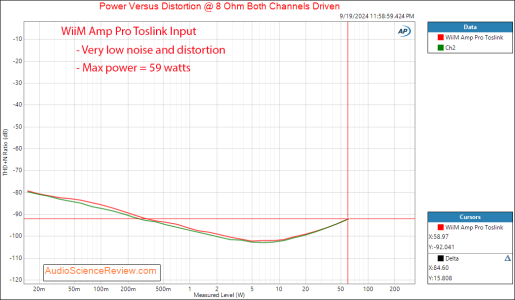I don't think we can say this is "lying"; like many other manufacturers I believe WiiM simply quotes the power figure where THD passes the 1% (-40dB) mark.
At 8ohm load that is indeed ~100W, as we can see from the ASR review:
Amir uses a more conservative (and IMHO more reasonable) approach to rate amplifier power; he uses the point where the THD shoots up ("knee" of the curve, if you will) - i.e. the point where the amp starts to visibly clip. The issue with this approach can be that some amps go into clipping very gradually, so it can be difficult to determine this point. With Vibelink it is fairly obvious, as we can see above.
This could explain in part why many vendors default to the 1% or 10% THD points when quoting power. Though that approach is IMHO actually even more problematic, because it is debatable whether the amp in question can maintain power output in clipping for any extended amount of time.

